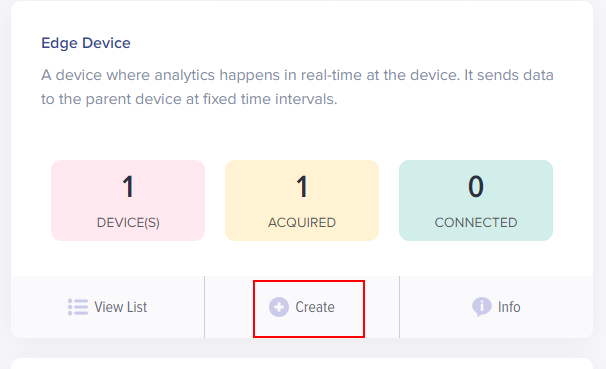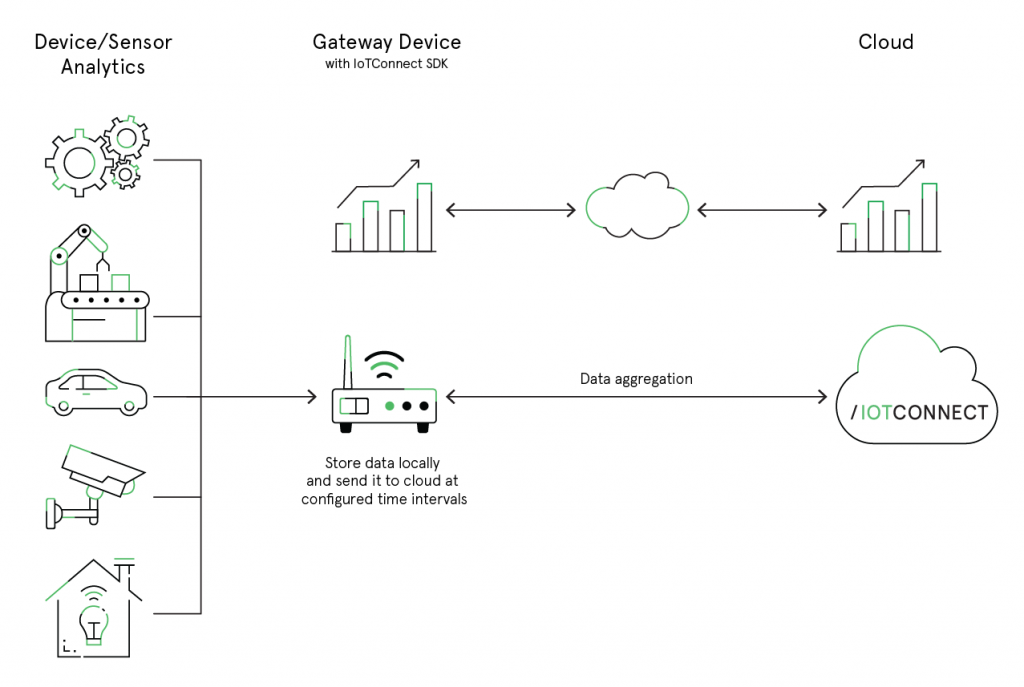When data is analyzed directly on the device itself instead of the cloud, IoTConnect calls it edge computing. This type of computing helps organizations to analyze the data in real-time.

(Screen: Edge Device)
Some benefits of edge computing include reduced response times and cost-efficient data traversing across the network. With IoTConnect, you can create, connect your edge devices and perform analytics.
 (Screen: Understanding Edge Device)
(Screen: Understanding Edge Device)
Let’s take an example of a manufacturing company with several IoT devices running on the cloud. You are one of the floor managers who want to implement edge computing and analyze the temperature recording of your machines locally at regular time intervals.
For this, you need to create a template on IoTConnect while selecting the edge support option. Once the template is created, define attributes for the edge devices. The template must contain at least one attribute with the datatype ‘Number’ for an edge-enabled device. As stated above, as a floor manager, you look to measure the machines’ temperature. Therefore, an attribute with the name ‘Temperature’ and Data Type ‘Number’ is created.
Next, select the type of data you need to analyze within the defined intervals. You can examine the minimum, maximum, sum, average, or the latest temperature value recorded within that interval. Also, set the tumbling window, the interval at which your IoT devices will take readings. You can also define the validation range as well as the unit for the attribute.
All such little things we have covered in a range of user guides – from template management and rule management to data export. It can help you to understand how the IoTConnect platform can ease your end-to-end IoT journey.